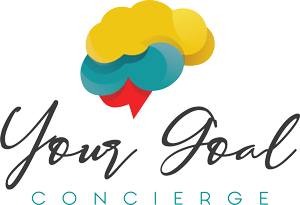5 Key Steps to Amplify Your Successes in 2025
Erica Kesse
Let's set things up for you to Thrive in 2025
As the year freshly begins, it's the perfect time to reflect on your accomplishments, recharge, and set intentions for the year. In this post, we'll explore five essential steps to help you amplify your successes and make 2025 your best year yet.
Celebrate Your Wins
Before looking ahead, take time to acknowledge and celebrate your achievements from the past year. Reflecting on your successes will help you:
- Acknowledge all those to whom you are grateful
- Identify areas of strength and growth
- Build confidence and momentum
- Develop a positive mindset for the new year
Dream Big
Now it's time to envision how you can amplify your successes and make them even better in 2025. Take a few moments to:
- Sit still and daydream maybe with a cup of tea
- Imagine your ideal outcomes and aspirations
- Write down your dreams in clear, actionable terms
- Create a vision board or mind map to visualize your goals
My colleague, Eternity Sledge, has a webinar called Dare to Dream.
Here is the synopsis: Welcome to
Dare to Dream Audaciously | Build Your Purpose-Driven Empire! Are you ready to take your dreams to the next level and create a purpose-driven empire? Join us for this exciting online event where you will network with like-minded individuals and gain the tools and strategies needed to turn your dreams into reality. Mark your calendars for
Wednesday January 22, 2024 at
7PM
CST and get ready to unleash your full potential. Don't miss out on this opportunity to build the empire you've always dreamed of!
Map Out Your Plan
With your dreams and aspirations in mind, create a strategic plan for the upcoming year. Break down your goals into smaller, manageable tasks, and:
- Create a timeline for January to December
- Outline when you'll launch each new initiative or project
- Identify potential obstacles and develop contingency plans
Share with Your Team
Effective communication is crucial to achieving your goals. Share your vision with your COO, stakeholders, and team members, ensuring everyone is:
- Aligned with your goals and objectives
- Accountable for their roles and responsibilities
- Equipped with the necessary resources and support
If you’re looking to empower your team to work seamlessly and make decisions with confidence, check out this article on creating a self-sufficient team that thrives without constantly needing your input and insight.
Here is an article from Nerissa Malloy, RN, COO.
Schedule Quarterly Celebrations
Finally, schedule regular check-ins to acknowledge your progress and successes. Set aside time each quarter to:
- Reflect on your accomplishments and challenges
- Adjust your plan as needed
- Celebrate your wins and milestones
By following these five key steps, you'll be well on your way to amplifying your successes and making 2025 an unforgettable year.
Take the Next Step
Grab the Strategic Planning Checklist.
Stay Focused on Your Goals
Until next time, stay focused on your goals, and remember to celebrate your wins along the way. You got this!
Warm regards,
Erica Kesse



